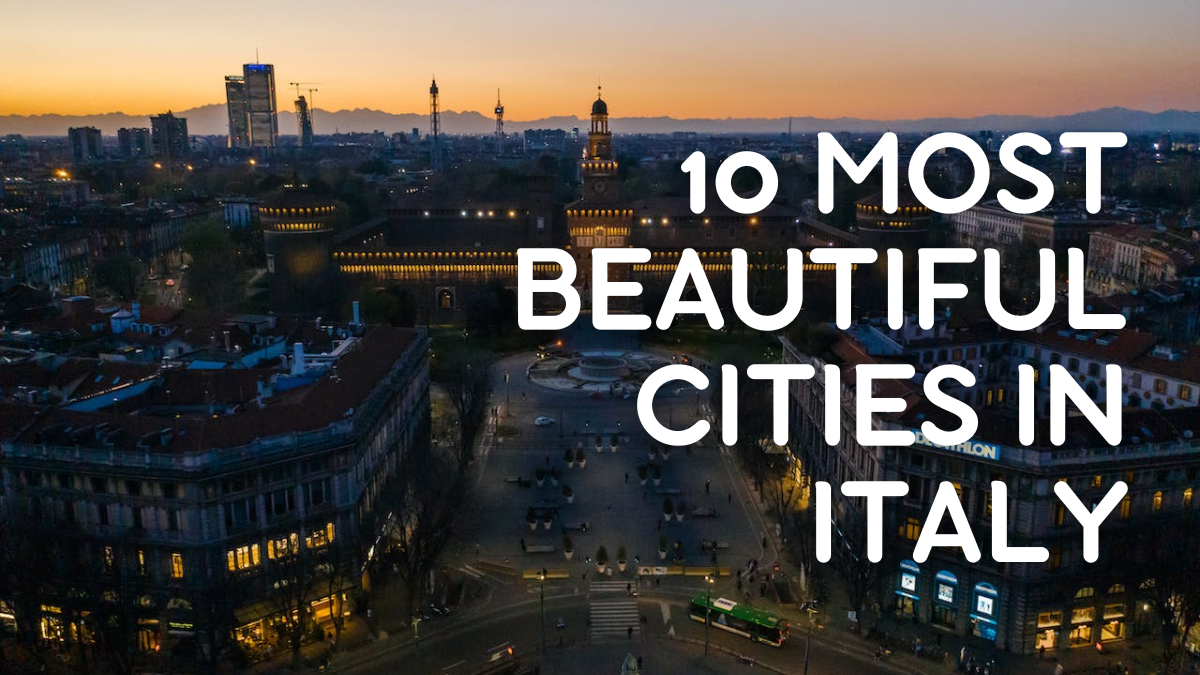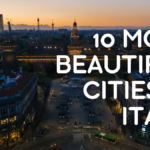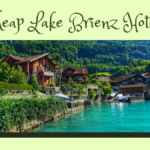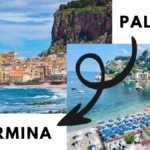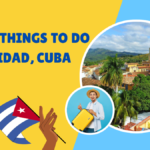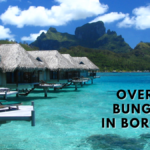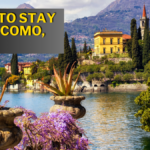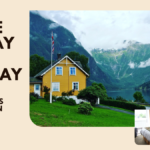What comes to your mind when you think of Italy? Rome, Venice, Florence, Milan? These are undoubtedly some of the most famous and beautiful cities in the world, but they are not the only ones that Italy has to offer.
In fact, Italy is home to hundreds of hidden gems that are waiting to be discovered by curious travelers who want to experience something different and authentic.
In this article, we will explore some of the most beautiful cities in Italy that you’ve never heard of. These are not the typical tourist destinations that you see on every travel guide, but rather the off-the-beaten-path places that will surprise you with their charm, history, and culture.
Whether you are looking for a romantic getaway, a cultural immersion, or a scenic adventure, you will find it in these amazing cities.
Are you ready to discover these amazing cities? Let’s get started!
Most Beautiful Cities in Italy
Here are the cities that we will cover in this article and why they are worth visiting:
- Lecce: The “Florence of the South” that boasts stunning baroque architecture and a rich culinary tradition.
- Matera: The “City of Stones” that is one of the oldest continuously inhabited settlements in the world and a UNESCO World Heritage Site.
- Bergamo: The “City of Art” that is divided into two parts: the upper town that preserves the medieval atmosphere and the lower town that offers modern attractions and amenities.
- Siena: The “City of the Palio” that is famous for its horse race and its well-preserved historic center that is also a UNESCO World Heritage Site.
- Verona: The “City of Love” that is the setting of Shakespeare’s Romeo and Juliet and a romantic destination for couples.
- Perugia: The “City of Chocolate” that is the capital of Umbria and a cultural hub that hosts several festivals and events throughout the year.
- Ravenna: The “City of Mosaics” that is renowned for its Byzantine and early Christian art and architecture that is also a UNESCO World Heritage Site.
- Trieste: The “City of Coffee” that is a melting pot of cultures and influences from Italy, Austria, Slovenia, and Croatia.
- Turin: The “City of Magic” that is the former capital of Italy and a center of innovation, culture, and gastronomy.
- Genoa: The “City of the Sea” that is the birthplace of Christopher Columbus and a maritime powerhouse that offers a variety of attractions and activities.
Lecce: The “Florence of the South”

Lecce is a city in the southern region of Puglia, known for its exquisite baroque architecture and its rich culinary tradition. Lecce is often called the “Florence of the South” because of its artistic and cultural heritage that rivals that of the Tuscan capital.
It is one of the Most Beautiful Cities in Italy.
How to get there
Lecce is easily accessible by train, bus, or car from other major cities in Italy. The nearest airport is Brindisi, which is about 40 kilometers away and offers domestic and international flights. From Brindisi, you can take a shuttle bus or a taxi to Lecce.
What to see and do
Lecce has plenty of attractions and landmarks to explore, especially in its historic center. Here are some of the highlights:
- Basilica di Santa Croce: This is the most emblematic building of Lecce’s baroque style, featuring a lavish facade with intricate sculptures and decorations. The interior is equally impressive, with a richly decorated nave and a stunning wooden ceiling.
- Piazza del Duomo: This is the main square of Lecce, surrounded by majestic buildings such as the Cathedral, the Bishop’s Palace, the Seminary, and the Bell Tower. The square is particularly beautiful at night, when it is illuminated by soft lights.
- Roman Amphitheater: This is a remarkable ancient site that dates back to the 2nd century AD. The amphitheater could seat up to 25,000 spectators and was used for gladiator fights and other spectacles. Today, it is partially visible and occasionally hosts cultural events and concerts.
- Castello di Carlo V: This is a massive castle that was built by the Emperor Charles V in the 16th century. The castle has a quadrangular shape and four imposing towers. It now houses a museum and an art gallery that showcase the history and culture of Lecce.
When to visit and what to expect
Lecce is a year-round destination, but the best time to visit is in spring or autumn, when the weather is mild and pleasant, and the crowds are fewer. The summer months can be very hot and humid, while the winter months can be cold and rainy.
Lecce is a relatively affordable city, compared to other popular destinations in Italy. You can find a variety of accommodation options, from budget hostels to luxury hotels. The food and drink prices are also reasonable, and you can enjoy some of the best dishes and wines of the region.
What to eat and drink
Lecce is a paradise for food lovers, as it offers a diverse and delicious cuisine that reflects its history and geography. Some of the specialties that you should not miss are:
- Pasticciotto: This is a typical pastry of Lecce, made of shortcrust dough filled with custard cream and baked in the oven. It is usually eaten for breakfast or as a snack, accompanied by a cup of coffee.
- Orecchiette: This is a type of pasta that has the shape of small ears, hence the name. It is usually served with a sauce made of turnip greens, garlic, chili, and anchovies, or with a ragu of meat and tomatoes.
- Rustico: This is a savory pie made of puff pastry filled with mozzarella, tomato, and bechamel sauce. It is a typical street food of Lecce, and you can find it in many bakeries and kiosks.
- Negroamaro: This is a red wine that is produced in the area of Lecce, and has a dark color and a bitter-sweet taste. It is a full-bodied and aromatic wine that pairs well with meat, cheese, and pasta dishes.
Tips and recommendations
Here are some tips and recommendations to make the most of your visit to Lecce:
- Rent a bike: Lecce is a bike-friendly city, and you can easily explore its streets and sights on two wheels. You can rent a bike from several shops in the city, or join a guided bike tour that will take you to the most interesting places.
- Visit the nearby beaches: Lecce is close to some of the most beautiful beaches in Italy, such as Porto Cesareo, Torre dell’Orso, and Otranto. You can reach them by bus, car, or bike, and enjoy the crystal-clear water and the golden sand.
- Attend a festival or event: Lecce hosts several festivals and events throughout the year, that celebrate its culture, art, and traditions. Some of the most popular ones are the Festival of Lights in December, the Festival of Paper Mache in July, and the Night of the Taranta in August.
Matera: The “City of Stones”

Matera is a city in the southern region of Basilicata, known for its ancient and unique dwellings called “sassi”. Sassi are cave houses that are carved into the rocky hillsides and have been inhabited since the Paleolithic era.
Matera is one of the oldest continuously inhabited settlements in the world and a UNESCO World Heritage Site. It is one of the Most Beautiful Cities in Italy.
How to get there
Matera is not very well connected by public transportation, so the best way to get there is by car. You can rent a car from other major cities in Italy, such as Naples, Bari, or Rome, and drive to Matera. The nearest airport is Bari, which is about 60 kilometers away and offers domestic and international flights. From Bari, you can take a bus or a train to Matera.
What to see and do
Matera has a lot to offer to visitors who want to experience its history, culture, and beauty. Here are some of the things that you should not miss:
- Sassi di Matera: These are the main attraction of Matera, and you can explore them by walking through the narrow streets and alleys, or by joining a guided tour. You can also visit some of the sassi that have been converted into museums, such as the Casa Grotta, the Museo della Civiltà Contadina, and the Museo Archeologico Nazionale.
- Duomo di Matera: This is the cathedral of Matera, located on the highest point of the city. It was built in the 13th century and renovated in the 18th century in a baroque style. It has a beautiful facade with a rose window and a bell tower, and a stunning interior with frescoes, paintings, and sculptures.
- Parco della Murgia Materana: This is a natural park that surrounds Matera and offers a spectacular view of the city and the sassi. You can hike, bike, or horseback ride through the park and admire the flora and fauna, as well as the rock churches and the prehistoric caves that are scattered throughout the area.
- Palombaro Lungo: This is a huge cistern that was built under the main square of Matera in the 19th century. It was used to collect and store rainwater for the inhabitants of the sassi, and it could hold up to 5 million liters of water. You can visit the cistern and learn about its history and engineering.
When to visit and what to expect
Matera is a year-round destination, but the best time to visit is in spring or autumn, when the weather is mild and sunny, and the colors of the nature are more vivid. The summer months can be very hot and dry, while the winter months can be cold and snowy.
Matera is a relatively expensive city, compared to other destinations in Italy. This is because it has become very popular and trendy in recent years, especially after it was chosen as the European Capital of Culture in 2019. You can find a range of accommodation options, from traditional sassi hotels to modern apartments. The food and drink prices are also high, but you can enjoy some of the specialties of the region, such as the bread, the cheese, and the wine.
What to eat and drink
Matera has a simple and rustic cuisine that reflects its history and geography. Some of the dishes that you should try are:
- Pane di Matera: This is a type of bread that is made with durum wheat flour and sourdough, and has a crunchy crust and a soft crumb. It is a staple of the local diet and it is often eaten with cheese, salami, or vegetables.
- Cialledda: This is a salad that is made with stale bread, tomatoes, onions, basil, olive oil, and vinegar. It is a refreshing and nutritious dish that is perfect for the summer.
- Crapiata: This is a soup that is made with legumes, such as beans, chickpeas, lentils, and peas, and cereals, such as barley, wheat, and oats. It is a hearty and warming dish that is typical of the winter.
- Aglianico del Vulture: This is a red wine that is produced in the area of Matera, and has a dark color and a full-bodied taste. It is a robust and complex wine that pairs well with meat, cheese, and pasta dishes.
Tips and recommendations
Here are some tips and recommendations to make the most of your visit to Matera:
- Book in advance: Matera is a very popular destination, and it can get very crowded and busy, especially during the peak seasons and the festivals. Therefore, it is advisable to book your accommodation, transportation, and tours in advance, to avoid disappointment and inconvenience.
- Wear comfortable shoes: Matera is a city that is best explored on foot, but it also has a lot of stairs, slopes, and uneven surfaces. Therefore, it is important to wear comfortable shoes that can support your feet and prevent injuries.
- Watch a movie or a show: Matera has been the setting of many movies and shows, such as The Passion of the Christ, Ben-Hur, and Wonder Woman. You can watch some of these productions and see how Matera was portrayed and transformed by the filmmakers. You can also attend some of the live performances that are held in the city, such as the Matera in Scena, the Matera Opera Festival, and the Matera Balloon Festival.
Bergamo: The “City of Art”

Bergamo is a city in the northern region of Lombardy, known for its artistic and architectural heritage and its scenic location. Bergamo is divided into two parts: the upper town (Città Alta) that preserves the medieval atmosphere and the lower town (Città Bassa) that offers modern attractions and amenities.
It is one of the Most Beautiful Cities in Italy.
How to get there
Bergamo is easily accessible by train, bus, or car from other major cities in Italy, such as Milan, Venice, or Bologna. The nearest airport is Orio al Serio, which is about 6 kilometers away and offers domestic and international flights. From the airport, you can take a bus or a taxi to Bergamo.
What to see and do
Bergamo has a lot of sights and activities to enjoy, both in the upper and lower town. Here are some of the highlights:
- Piazza Vecchia: This is the main square of the upper town, surrounded by elegant buildings such as the Palazzo della Ragione, the Palazzo del Podestà, the Biblioteca Civica, and the Torre Civica. The square is also home to the Fontana Contarini, a beautiful fountain that dates back to the 18th century.
- Basilica di Santa Maria Maggiore: This is the most important church of Bergamo, located next to the Piazza Vecchia. It was built in the 12th century and renovated in the 16th century in a Renaissance style. It has a stunning facade with marble decorations and a magnificent interior with frescoes, paintings, and sculptures.
- Cappella Colleoni: This is a chapel that is attached to the Basilica di Santa Maria Maggiore, and that serves as the mausoleum of the condottiere Bartolomeo Colleoni. It was built in the 15th century and has a splendid facade with polychrome marble and a richly decorated interior with a golden ceiling and a marble altar.
- Rocca di Bergamo: This is a fortress that was built in the 14th century and that dominates the upper town. It has a quadrangular shape and four towers, and it offers a panoramic view of the city and the surrounding hills. You can visit the fortress and its museum, which displays weapons, armors, and historical documents.
- Accademia Carrara: This is an art gallery that is located in the lower town, and that houses one of the most prestigious collections of Italian paintings in the world. You can admire works by artists such as Botticelli, Raphael, Titian, Bellini, and Canaletto, among others.
- Teatro Donizetti: This is a theater that is named after the composer Gaetano Donizetti, who was born in Bergamo. It is a neoclassical building that hosts opera, ballet, and musical performances, as well as festivals and events dedicated to Donizetti and his works.
When to visit and what to expect
Bergamo is a year-round destination, but the best time to visit is in spring or autumn, when the weather is mild and sunny, and the nature is more colorful. The summer months can be very hot and humid, while the winter months can be cold and snowy.
Bergamo is a moderately expensive city, compared to other destinations in Italy. You can find a variety of accommodation options, from budget hostels to luxury hotels. The food and drink prices are also reasonable, and you can enjoy some of the specialties of the region, such as the polenta, the casoncelli, and the stracciatella.
What to eat and drink
Bergamo has a hearty and tasty cuisine that reflects its history and geography. Some of the dishes that you should try are:
- Polenta: This is a type of porridge that is made with cornmeal and water, and that is a staple of the local diet. It can be eaten plain or with cheese, butter, meat, or vegetables.
- Casoncelli: These are a type of stuffed pasta that are shaped like half-moons, and that are filled with meat, cheese, bread crumbs, and herbs. They are usually served with butter, sage, and bacon, or with a tomato sauce.
- Stracciatella: This is a dessert that is made with egg whites, sugar, and chocolate chips, and that has a creamy and fluffy texture. It is often eaten with ice cream or whipped cream, or as a filling for cakes and pastries.
- Valcalepio: This is a wine that is produced in the area of Bergamo, and that has a red and a white variety. The red wine is made with Merlot and Cabernet Sauvignon grapes, and has a fruity and spicy taste. The white wine is made with Pinot Bianco and Pinot Grigio grapes, and has a floral and citrusy taste.
Tips and recommendations
Here are some tips and recommendations to make the most of your visit to Bergamo:
- Take the funicular: Bergamo has two funiculars that connect the upper and lower town, and that offer a convenient and scenic way to move around the city. You can buy a ticket that includes both funiculars and the bus service, and enjoy the view of the city and the hills from above.
- Visit the nearby lakes: Bergamo is close to some of the most beautiful lakes in Italy, such as Lake Como, Lake Garda, and Lake Iseo. You can reach them by bus, car, or train, and enjoy the water activities, the landscapes, and the villages that are located along the shores.
- Shop at the markets: Bergamo has several markets that are held throughout the week, and that offer a variety of products, such as food, clothes, antiques, and crafts. You can browse the stalls and find some bargains and souvenirs, as well as mingle with the locals and experience their culture.
Siena: The “City of the Palio”

Siena is a city in the central region of Tuscany, known for its medieval architecture and its famous horse race, the Palio. Siena is one of the best-preserved historic cities in Italy and a UNESCO World Heritage Site.
It is one of the Most Beautiful Cities in Italy.
How to get there
Siena is easily accessible by train, bus, or car from other major cities in Italy, such as Florence, Rome, or Pisa. The nearest airport is Florence, which is about 80 kilometers away and offers domestic and international flights. From Florence, you can take a bus or a train to Siena.
What to see and do
Siena has a lot of attractions and landmarks to explore, especially in its historic center. Here are some of the highlights:
- Piazza del Campo: This is the main square of Siena, and the venue of the Palio, the famous horse race that takes place twice a year, on July 2 and August 16. The square is shaped like a shell and is surrounded by elegant buildings such as the Palazzo Pubblico, the Torre del Mangia, and the Fonte Gaia.
- Duomo di Siena: This is the cathedral of Siena, located on a hill overlooking the city. It was built in the 13th century and has a magnificent facade with marble stripes and sculptures. The interior is equally impressive, with a striped dome, a mosaic floor, and a library with frescoes by Pinturicchio.
- Basilica di San Domenico: This is a church that is dedicated to Saint Dominic, the founder of the Dominican order. It was built in the 13th century and has a simple Gothic style. It is famous for housing the relics of Saint Catherine of Siena, the patron saint of Italy and Europe, and a Doctor of the Church.
- Museo Civico: This is a museum that is located in the Palazzo Pubblico, and that displays the art and history of Siena. You can admire works by artists such as Simone Martini, Ambrogio Lorenzetti, and Duccio di Buoninsegna, among others.
- Pinacoteca Nazionale: This is an art gallery that is located in a former convent, and that houses one of the most important collections of Sienese paintings in the world. You can admire works by artists such as Duccio, Sassetta, Sodoma, and Beccafumi, among others.
When to visit and what to expect
Siena is a year-round destination, but the best time to visit is in spring or autumn, when the weather is mild and sunny, and the nature is more colorful. The summer months can be very hot and crowded, especially during the Palio, while the winter months can be cold and rainy.
Siena is a moderately expensive city, compared to other destinations in Italy. You can find a variety of accommodation options, from budget hostels to luxury hotels. The food and drink prices are also reasonable, and you can enjoy some of the specialties of the region, such as the pici, the panforte, and the Chianti.
What to eat and drink
Siena has a rich and varied cuisine that reflects its history and geography. Some of the dishes that you should try are:
- Pici: These are a type of thick and hand-rolled pasta that are typical of Siena and the surrounding area. They are usually served with a sauce made of garlic, chili, cheese, and breadcrumbs, or with a ragu of wild boar or duck.
- Panforte: This is a cake that is made with honey, nuts, dried fruits, spices, and flour, and that has a dense and chewy texture. It is a traditional dessert of Siena and it is often eaten during Christmas.
- Ricciarelli: These are almond cookies that are shaped like diamonds and have a soft and moist texture. They are flavored with orange zest and vanilla, and dusted with powdered sugar. They are another typical dessert of Siena and they are often eaten during Easter.
- Chianti: This is a red wine that is produced in the area of Siena, and that has a ruby color and a fruity and floral taste. It is a light and refreshing wine that pairs well with meat, cheese, and pasta dishes.
Tips and recommendations
Here are some tips and recommendations to make the most of your visit to Siena:
- Watch the Palio: If you are lucky enough to visit Siena during the Palio, you should not miss the opportunity to watch this thrilling and colorful event. The Palio is a horse race that involves 10 of the 17 contrade (districts) of Siena, that compete for the honor and glory of their contrada. The race is preceded by a parade of historical costumes and flags, and followed by a celebration of the winning contrada.
- Visit the contrade: Each contrada of Siena has its own history, culture, and traditions, and you can visit them and learn more about their identity and their rivalry. You can also see their symbols, their fountains, their churches, and their museums, and feel their pride and passion.
- Enjoy the views: Siena is a city that offers stunning views of the surrounding countryside and the hills. You can enjoy these views from various points in the city, such as the Torre del Mangia, the Duomo, the Basilica di San Domenico, and the Fortezza Medicea. You can also take a walk or a bike ride outside the city walls and admire the landscapes and the vineyards.
Verona: The “City of Love”

Verona is a city in the northern region of Veneto, known for its romantic atmosphere and its connection to Shakespeare’s Romeo and Juliet. Verona is a charming and elegant city that boasts a rich cultural and artistic heritage and a UNESCO World Heritage Site.
It is one of the Most Beautiful Cities in Italy.
How to get there
Verona is easily accessible by train, bus, or car from other major cities in Italy, such as Venice, Milan, or Florence. The nearest airport is Verona Villafranca, which is about 12 kilometers away and offers domestic and international flights. From the airport, you can take a bus or a taxi to Verona.
What to see and do
Verona has a lot of attractions and landmarks to explore, especially in its historic center. Here are some of the highlights:
- Arena di Verona: This is a Roman amphitheater that dates back to the 1st century AD. It is one of the best-preserved and largest amphitheaters in the world, and it can seat up to 15,000 spectators. It is famous for hosting opera, ballet, and musical performances, as well as festivals and events.
- Casa di Giulietta: This is a house that is said to be the home of Juliet, the heroine of Shakespeare’s Romeo and Juliet. It is a 13th-century building that has a balcony overlooking a courtyard, where visitors can see a bronze statue of Juliet and leave love messages on the walls. You can also visit the interior of the house and see some memorabilia related to the play and the movie adaptations.
- Piazza delle Erbe: This is the main square of Verona, and the former site of the Roman forum. It is a lively and picturesque square that is surrounded by historic buildings, such as the Palazzo Maffei, the Torre dei Lamberti, and the Casa dei Mercanti. The square is also home to a fountain with a statue of Madonna Verona, a market with stalls and vendors, and a column with a lion, the symbol of Venice.
- Castelvecchio: This is a castle that was built in the 14th century by the Scaligeri family, the rulers of Verona. It is a massive and imposing structure that has a bridge over the Adige river, and seven towers. It now houses a museum that displays paintings, sculptures, weapons, and armors from the Middle Ages and the Renaissance.
- Basilica di San Zeno Maggiore: This is a church that is dedicated to Saint Zeno, the patron saint of Verona. It was built in the 12th century and has a Romanesque style. It has a beautiful facade with a rose window and a portal with sculptures and reliefs. The interior is equally impressive, with a striped nave, a crypt, and a triptych by Mantegna.
When to visit and what to expect
Verona is a year-round destination, but the best time to visit is in spring or autumn, when the weather is mild and sunny, and the flowers and the leaves are more colorful. The summer months can be very hot and crowded, especially during the opera season and the festivals, while the winter months can be cold and foggy.
Verona is a moderately expensive city, compared to other destinations in Italy. You can find a variety of accommodation options, from budget hostels to luxury hotels. The food and drink prices are also reasonable, and you can enjoy some of the specialties of the region, such as the risotto, the gnocchi, and the Amarone.
What to eat and drink
Verona has a delicious and varied cuisine that reflects its history and geography. Some of the dishes that you should try are:
- Risotto all’Amarone: This is a type of rice dish that is cooked with Amarone, a red wine that is produced in the area of Verona, and that has a dry and full-bodied taste. The risotto has a dark color and a rich flavor, and it is usually topped with cheese, such as Parmesan or Monte Veronese.
- Gnocchi di San Zeno: These are small dumplings that are made with potatoes, flour, and eggs, and that are boiled and then baked in the oven with butter and cheese. They are a traditional dish of Verona and they are eaten on the feast day of Saint Zeno, on January 21.
- Pandoro: This is a cake that is made with flour, eggs, butter, and sugar, and that has a golden color and a soft and fluffy texture. It is a typical dessert of Verona and it is often eaten during Christmas and New Year. It is usually sprinkled with powdered sugar or filled with cream or chocolate.
- Recioto: This is a sweet wine that is produced in the area of Verona, and that has a ruby color and a fruity and honeyed taste. It is made with partially dried grapes, such as Corvina, Rondinella, and Molinara, and it is a dessert wine that pairs well with cakes, pastries, and cheese.
Tips and recommendations
Here are some tips and recommendations to make the most of your visit to Verona:
- Watch an opera: If you are a fan of opera, you should not miss the opportunity to watch a performance at the Arena di Verona, which is one of the most spectacular and prestigious venues in the world. You can choose from a variety of operas, such as Aida, Carmen, La Traviata, and Tosca, and enjoy the music, the costumes, and the scenery under the stars.
- Visit the nearby towns: Verona is close to some of the most beautiful and charming towns in Italy, such as Mantua, Vicenza, and Padua. You can reach them by bus, car, or train, and enjoy their art, culture, and architecture, as well as their landscapes and their gastronomy.
- Celebrate Valentine’s Day: Verona is the perfect destination for couples who want to celebrate their love and romance. You can visit the Casa di Giulietta and the Tomba di Giulietta, where you can declare your love and exchange vows. You can also attend some of the events and activities that are organized for Valentine’s Day, such as concerts, exhibitions, and markets.
Perugia: The “City of Chocolate”

Perugia is a city in the central region of Umbria, known for its chocolate production and its cultural and artistic heritage.
Perugia is a charming and lively city that boasts a well-preserved historic center and a UNESCO World Heritage Site. It is one of the Most Beautiful Cities in Italy.
How to get there
Perugia is easily accessible by train, bus, or car from other major cities in Italy, such as Rome, Florence, or Bologna. The nearest airport is Perugia San Francesco d’Assisi, which is about 12 kilometers away and offers domestic and international flights. From the airport, you can take a bus or a taxi to Perugia.
What to see and do
Perugia has a lot of attractions and landmarks to explore, especially in its historic center. Here are some of the highlights:
- Piazza IV Novembre: This is the main square of Perugia, and the heart of the city. It is a spacious and elegant square that is surrounded by historic buildings, such as the Palazzo dei Priori, the Cathedral of San Lorenzo, and the Fontana Maggiore.
- Palazzo dei Priori: This is a palace that was built in the 13th century and that served as the seat of the city government and the magistrates. It is a Gothic building that has a facade with arched windows and a portal with sculptures and reliefs. It now houses the National Gallery of Umbria, which displays paintings, sculptures, and crafts from the Middle Ages and the Renaissance.
- Fontana Maggiore: This is a fountain that was built in the 13th century and that stands in the center of the Piazza IV Novembre. It is a masterpiece of medieval art and engineering, and it has two basins with 50 panels that depict scenes from the Bible, the history, and the mythology of Perugia.
- Rocca Paolina: This is a fortress that was built in the 16th century by Pope Paul III, who wanted to assert his authority over Perugia. It is a massive and imposing structure that has four bastions and a tunnel. It now hosts exhibitions and events, and offers a panoramic view of the city and the valley.
- Perugina Chocolate Factory: This is a factory that produces the famous Perugina chocolate, which is known for its quality and variety. You can visit the factory and see how the chocolate is made, as well as taste some samples and buy some souvenirs.
When to visit and what to expect
Perugia is a year-round destination, but the best time to visit is in October, when the city hosts the Eurochocolate Festival, a celebration of chocolate and its culture. The festival attracts thousands of visitors and offers a variety of events and activities, such as workshops, exhibitions, concerts, and tastings.
Perugia is a moderately expensive city, compared to other destinations in Italy. You can find a variety of accommodation options, from budget hostels to luxury hotels. The food and drink prices are also reasonable, and you can enjoy some of the specialties of the region, such as the torta al testo, the truffles, and the Sagrantino.
What to eat and drink
Perugia has a delicious and varied cuisine that reflects its history and geography. Some of the dishes that you should try are:
- Torta al testo: This is a type of flatbread that is made with flour, water, salt, and baking soda, and that is cooked on a hot stone. It is a staple of the local diet and it is usually eaten with cheese, ham, or vegetables.
- Truffles: These are edible fungi that grow underground and that have a distinctive aroma and flavor. They are a delicacy of Perugia and they are used to season pasta, risotto, eggs, and meat dishes.
- Baci Perugina: These are chocolate pralines that are filled with hazelnut cream and topped with a whole hazelnut. They are wrapped in silver foil and have a love message inside. They are the most famous product of the Perugina chocolate factory and they are a symbol of romance and friendship.
- Sagrantino: This is a red wine that is produced in the area of Perugia, and that has a ruby color and a full-bodied taste. It is a dry and tannic wine that pairs well with meat, cheese, and chocolate dishes.
Tips and recommendations
Here are some tips and recommendations to make the most of your visit to Perugia:
- Take the minimetro: Perugia has a minimetro system that connects the different parts of the city, and that offers a convenient and fast way to move around. You can buy a ticket that includes the minimetro and the bus service, and enjoy the view of the city and the hills from the windows.
- Visit the nearby towns: Perugia is close to some of the most beautiful and charming towns in Umbria, such as Assisi, Spoleto, Orvieto, and Gubbio. You can reach them by bus, car, or train, and enjoy their art, culture, and architecture, as well as their landscapes and their gastronomy.
- Learn Italian: Perugia is a great place to learn Italian, as it has a prestigious and renowned university that offers courses and programs for foreign students. You can enroll in a course that suits your level and your interests, and improve your language skills and your cultural knowledge.
Ravenna: The “City of Mosaics”

Ravenna is a city in the northern region of Emilia-Romagna, known for its Byzantine and early Christian art and architecture.
Ravenna is home to eight UNESCO World Heritage Sites, most of which are decorated with stunning mosaics that date back to the 5th and 6th centuries. It is one of the Most Beautiful Cities in Italy.
How to get there
Ravenna is easily accessible by train, bus, or car from other major cities in Italy, such as Bologna, Venice, or Florence. The nearest airport is Bologna, which is about 80 kilometers away and offers domestic and international flights. From Bologna, you can take a bus or a train to Ravenna.
What to see and do
Ravenna has a lot of attractions and landmarks to explore, especially in its historic center. Here are some of the highlights:
- Basilica di San Vitale: This is a church that was built in the 6th century and that is one of the most important examples of Byzantine art and architecture in the world. It has an octagonal shape and a dome, and it is adorned with magnificent mosaics that depict scenes from the Bible, the history, and the mythology of Ravenna.
- Mausoleo di Galla Placidia: This is a mausoleum that was built in the 5th century and that is the burial place of Galla Placidia, the daughter of the Roman Emperor Theodosius I. It is a small and simple building that has a cross-shaped plan and a dome, and it is covered with splendid mosaics that represent the stars, the apostles, and the symbols of the four evangelists.
- Battistero Neoniano: This is a baptistery that was built in the 5th century and that is the oldest monument in Ravenna. It has an octagonal shape and a dome, and it is decorated with beautiful mosaics that depict the baptism of Christ, the twelve apostles, and the seasons.
- Basilica di Sant’Apollinare Nuovo: This is a church that was built in the 6th century and that was originally a palace chapel of the Ostrogothic king Theodoric. It has a basilical shape and a nave, and it is embellished with splendid mosaics that portray the miracles of Christ, the martyrs of Ravenna, and the procession of the virgins and the magi.
- Museo Nazionale: This is a museum that is located in a former Benedictine monastery, and that displays the art and history of Ravenna. You can admire works such as sculptures, paintings, coins, and manuscripts, as well as some of the original mosaics that were removed from the monuments for conservation purposes.
When to visit and what to expect
Ravenna is a year-round destination, but the best time to visit is in spring or autumn, when the weather is mild and sunny, and the colors of the nature are more vivid. The summer months can be very hot and humid, while the winter months can be cold and foggy.
Ravenna is a moderately expensive city, compared to other destinations in Italy. You can find a variety of accommodation options, from budget hostels to luxury hotels. The food and drink prices are also reasonable, and you can enjoy some of the specialties of the region, such as the piadina, the cappelletti, and the Sangiovese.
What to eat and drink
Ravenna has a delicious and varied cuisine that reflects its history and geography. Some of the dishes that you should try are:
- Piadina: This is a type of flatbread that is made with flour, water, salt, and lard, and that is cooked on a griddle. It is a staple of the local diet and it is usually eaten with cheese, ham, or vegetables.
- Cappelletti: These are a type of stuffed pasta that are shaped like little hats, hence the name. They are filled with cheese, meat, or vegetables, and they are usually served with a broth or a sauce.
- Ciambella: This is a cake that is made with flour, eggs, sugar, and butter, and that has a ring shape and a hole in the center. It is a traditional dessert of Ravenna and it is often eaten for breakfast or as a snack, accompanied by a glass of milk or a cup of coffee.
- Sangiovese: This is a red wine that is produced in the area of Ravenna, and that has a ruby color and a fruity and floral taste. It is a light and refreshing wine that pairs well with meat, cheese, and pasta dishes.
Tips and recommendations
Here are some tips and recommendations to make the most of your visit to Ravenna:
- Buy a combined ticket: Ravenna has a combined ticket that allows you to visit five of the UNESCO World Heritage Sites, namely the Basilica di San Vitale, the Mausoleo di Galla Placidia, the Battistero Neoniano, the Basilica di Sant’Apollinare Nuovo, and the Museo Nazionale. The ticket costs 9.50 euros and it is valid for seven days.
- Visit the nearby beaches: Ravenna is close to some of the most beautiful beaches in Italy, such as Marina di Ravenna, Lido di Dante, and Lido di Classe. You can reach them by bus, car, or bike, and enjoy the crystal-clear water and the golden sand.
- Attend a festival or event: Ravenna hosts several festivals and events throughout the year, that celebrate its culture, art, and traditions. Some of the most popular ones are the Ravenna Festival in June and July, the Mosaico di Notte in August, and the Ravenna Mosaico in October and November.
Trieste: The “City of Coffee”

Trieste is a city in the northeastern region of Friuli-Venezia Giulia, known for its coffee culture and its cosmopolitan atmosphere.
Trieste is a port city that has a long and rich history of trade and exchange with different countries and cultures, such as Austria, Slovenia, and Croatia. It is one of the Most Beautiful Cities in Italy.
How to get there
Trieste is easily accessible by train, bus, or car from other major cities in Italy, such as Venice, Milan, or Rome. The nearest airport is Trieste Friuli Venezia Giulia, which is about 30 kilometers away and offers domestic and international flights. From the airport, you can take a bus or a taxi to Trieste.
What to see and do
Trieste has a lot of attractions and landmarks to explore, especially in its historic center. Here are some of the highlights:
- Piazza Unità d’Italia: This is the main square of Trieste, and the largest sea-facing square in Europe. It is a spacious and elegant square that is surrounded by majestic buildings, such as the Town Hall, the Government Palace, and the Lloyd Triestino Palace. The square is also home to the Fountain of the Four Continents, a beautiful fountain that symbolizes the four continents that Trieste traded with.
- Castello di Miramare: This is a castle that was built in the 19th century by the Archduke Maximilian of Austria, who was the brother of the Emperor Franz Joseph and the husband of the Empress Carlota of Mexico. It is a fairy-tale-like structure that has a white facade and a tower, and it is located on a promontory overlooking the sea. You can visit the castle and its museum, which display the furniture, the paintings, and the personal belongings of the royal couple.
- Cattedrale di San Giusto: This is the cathedral of Trieste, located on a hill overlooking the city. It was built in the 14th century and has a Romanesque style. It has a facade with a rose window and a portal with sculptures and reliefs. The interior is equally impressive, with a mosaic floor, a wooden ceiling, and a chapel with frescoes by Tiepolo.
- Museo Revoltella: This is a museum that is located in a former palace, and that displays the art and history of Trieste. You can admire works by artists such as Hayez, De Nittis, Previati, and Klimt, among others. You can also see some of the rooms and the furniture of the palace, which belonged to the Baron Pasquale Revoltella, a wealthy merchant and banker who donated his collection and his property to the city.
- Caffè degli Specchi: This is a cafe that is located in the Piazza Unità d’Italia, and that is one of the most famous and historic cafes in Trieste. It was founded in 1839 and it has been a meeting place for writers, artists, politicians, and intellectuals, such as James Joyce, Italo Svevo, and Umberto Saba. You can enjoy a cup of coffee and a pastry, and feel the atmosphere and the charm of the cafe.
When to visit and what to expect
Trieste is a year-round destination, but the best time to visit is in spring or autumn, when the weather is mild and sunny, and the nature is more colorful. The summer months can be very hot and crowded, while the winter months can be cold and windy.
Trieste is a moderately expensive city, compared to other destinations in Italy. You can find a variety of accommodation options, from budget hostels to luxury hotels. The food and drink prices are also reasonable, and you can enjoy some of the specialties of the region, such as the jota, the gubana, and the Terrano.
What to eat and drink
Trieste has a delicious and varied cuisine that reflects its history and geography. Some of the dishes that you should try are:
- Jota: This is a soup that is made with beans, sauerkraut, potatoes, and pork, and that has a sour and hearty taste. It is a traditional dish of Trieste and it is usually eaten in the winter.
- Gubana: This is a cake that is made with yeast dough and filled with dried fruits, nuts, chocolate, and liqueur. It is a typical dessert of Trieste and it is often eaten during Christmas and Easter.
- Coffee: Trieste is the coffee capital of Italy, and it has a long and rich tradition of roasting and brewing coffee. You can find a variety of coffee types and blends, such as the espresso, the cappuccino, the macchiato, and the gocciato. You can also learn more about the coffee culture and history of Trieste at the Museo del Caffè, which is located in the former warehouse of the Illy company.
- Terrano: This is a red wine that is produced in the area of Trieste, and that has a ruby color and a fruity and mineral taste. It is a dry and acidic wine that pairs well with meat, cheese, and soup dishes.
Tips and recommendations
Here are some tips and recommendations to make the most of your visit to Trieste:
- Take the tram: Trieste has a tram system that connects the city center with the surrounding hills and villages, and that offers a convenient and scenic way to move around. You can buy a ticket that includes the tram and the bus service, and enjoy the view of the city and the sea from the windows.
- Visit the nearby countries: Trieste is close to some of the neighboring countries, such as Slovenia, Croatia, and Austria. You can reach them by bus, car, or train, and enjoy their art, culture, and architecture, as well as their landscapes and their gastronomy.
- Attend a festival or event: Trieste hosts several festivals and events throughout the year, that celebrate its culture, art, and traditions. Some of the most popular ones are the Barcolana in October, the International Film Festival in January, and the Science Festival in April.
Turin: The “City of Magic”

Turin is a city in the northwestern region of Piedmont, known for its magic and mystery and its innovation and culture. Turin is a former capital of Italy and a center of industry, science, and art.
It is one of the Most Beautiful Cities in Italy.
How to get there
Turin is easily accessible by train, bus, or car from other major cities in Italy, such as Milan, Genoa, or Rome. The nearest airport is Turin Caselle, which is about 16 kilometers away and offers domestic and international flights. From the airport, you can take a bus, a train, or a taxi to Turin.
What to see and do
Turin has a lot of attractions and landmarks to explore, especially in its historic center. Here are some of the highlights:
- Piazza Castello: This is the main square of Turin, and the heart of the city. It is a spacious and elegant square that is surrounded by majestic buildings, such as the Palazzo Reale, the Palazzo Madama, the Teatro Regio, and the Biblioteca Reale.
- Palazzo Reale: This is a palace that was built in the 17th century and that served as the residence of the Savoy dynasty, the rulers of Italy until 1946. It is a baroque building that has a facade with statues and a portal with a balcony. You can visit the palace and its museum, which display the furniture, the paintings, and the personal belongings of the royal family.
- Palazzo Madama: This is a palace that was built in the 13th century and that was the seat of the first Senate of Italy. It is a medieval building that has a facade with two towers and a portal with a staircase. You can visit the palace and its museum, which display works of art from the ancient to the modern times.
- Mole Antonelliana: This is a monument that was built in the 19th century and that is the symbol of Turin. It is a neoclassical building that has a dome and a spire, and that reaches a height of 167 meters. It now houses the National Museum of Cinema, which displays the history and the culture of cinema.
- Museo Egizio: This is a museum that is dedicated to the ancient Egyptian civilization. It is one of the oldest and largest museums of its kind in the world, and it displays a collection of artifacts, such as mummies, sarcophagi, statues, and papyri.
When to visit and what to expect
Turin is a year-round destination, but the best time to visit is in spring or autumn, when the weather is mild and sunny, and the nature is more colorful. The summer months can be very hot and humid, while the winter months can be cold and snowy.
Turin is a moderately expensive city, compared to other destinations in Italy. You can find a variety of accommodation options, from budget hostels to luxury hotels. The food and drink prices are also reasonable, and you can enjoy some of the specialties of the region, such as the bagna cauda, the agnolotti, and the Barolo.
What to eat and drink
Turin has a delicious and varied cuisine that reflects its history and geography. Some of the dishes that you should try are:
- Bagna cauda: This is a sauce that is made with garlic, anchovies, and olive oil, and that is served hot in a pot. It is a traditional dish of Turin and it is usually eaten with raw or cooked vegetables, such as artichokes, peppers, and onions.
- Agnolotti: These are a type of stuffed pasta that are shaped like small squares, and that are filled with meat, cheese, or vegetables. They are usually served with a sauce made of butter, sage, and cheese, or with a broth or a ragu.
- Gianduiotto: This is a chocolate praline that is made with hazelnut paste and cocoa, and that has a smooth and creamy texture. It is a typical dessert of Turin and it is often eaten with coffee or liqueur.
- Barolo: This is a red wine that is produced in the area of Turin, and that has a ruby color and a full-bodied taste. It is a dry and tannic wine that pairs well with meat, cheese, and pasta dishes.
Tips and recommendations
Here are some tips and recommendations to make the most of your visit to Turin:
- Explore the magic: Turin is a city that is famous for its magic and mystery, and that has a lot of legends and secrets to discover. You can visit some of the places that are linked to the occult and the esoteric, such as the Porta Palatina, the Piazza Statuto, and the Gran Madre di Dio. You can also join a guided tour that will take you to the most mysterious and fascinating spots of the city.
- Visit the nearby mountains: Turin is close to some of the most beautiful and impressive mountains in Italy, such as the Alps and the Apennines. You can reach them by bus, car, or train, and enjoy the winter sports, the summer activities, and the natural parks that are located in the area.
- Attend a festival or event: Turin hosts several festivals and events throughout the year, that celebrate its culture, art, and traditions. Some of the most popular ones are the Turin International Book Fair in May, the Turin Film Festival in November, and the Luci d’Artista in December and January.
Genoa: The “City of the Sea”

Genoa is a city in the northwestern region of Liguria, known for its maritime history and its culture and cuisine.
Genoa is the birthplace of Christopher Columbus and a former maritime republic that dominated the Mediterranean trade and commerce. It is one of the Most Beautiful Cities in Italy.
How to get there
Genoa is easily accessible by train, bus, or car from other major cities in Italy, such as Milan, Turin, or Florence. The nearest airport is Genoa Cristoforo Colombo, which is about 6 kilometers away and offers domestic and international flights. From the airport, you can take a bus, a train, or a taxi to Genoa.
What to see and do
Genoa has a lot of attractions and landmarks to explore, especially in its historic center. Here are some of the highlights:
- Porto Antico: This is the old port of Genoa, and the heart of the city. It is a lively and picturesque area that is surrounded by historic buildings, such as the Palazzo San Giorgio, the Palazzo Spinola, and the Palazzo Ducale. The port is also home to the Aquarium of Genoa, the largest aquarium in Italy and one of the largest in Europe, which displays a variety of marine species and habitats.
- Via Garibaldi: This is a street that was built in the 16th century and that is one of the most beautiful and elegant streets in the world. It is lined with majestic palaces, such as the Palazzo Rosso, the Palazzo Bianco, and the Palazzo Doria Tursi, which belong to the UNESCO World Heritage Site of the Rolli Palaces. You can visit the palaces and their museums, which display paintings, sculptures, and furniture from the Renaissance and the Baroque periods.
- Cattedrale di San Lorenzo: This is the cathedral of Genoa, located in the Piazza San Lorenzo. It was built in the 12th century and has a Romanesque-Gothic style. It has a facade with black and white stripes and a portal with sculptures and reliefs. The interior is equally impressive, with a nave, a dome, and a chapel that houses the Sacro Catino, a green glass bowl that is said to be the Holy Grail.
- Lanterna di Genova: This is a lighthouse that was built in the 12th century and that is the symbol of Genoa. It is a medieval tower that has a height of 117 meters and a light that can be seen from 50 kilometers away. You can visit the lighthouse and its museum, which display the history and the culture of Genoa and its navigation.
- Museo del Mare: This is a museum that is dedicated to the sea and its exploration. It is located in a former shipyard, and it displays a collection of artifacts, such as maps, models, instruments, and ships, that illustrate the maritime history and the achievements of Genoa and its sailors.
When to visit and what to expect
Genoa is a year-round destination, but the best time to visit is in spring or autumn, when the weather is mild and sunny, and the nature is more colorful. The summer months can be very hot and crowded, especially during the festivals and the events, while the winter months can be cold and rainy.
Genoa is a moderately expensive city, compared to other destinations in Italy. You can find a variety of accommodation options, from budget hostels to luxury hotels. The food and drink prices are also reasonable, and you can enjoy some of the specialties of the region, such as the focaccia, the pesto, and the Sciacchetrà.
What to eat and drink
Genoa has a delicious and varied cuisine that reflects its history and geography. Some of the dishes that you should try are:
- Focaccia: This is a type of flatbread that is made with flour, water, salt, and olive oil, and that is baked in the oven. It is a staple of the local diet and it can be eaten plain or with cheese, ham, or vegetables.
- Pesto: This is a sauce that is made with basil, garlic, pine nuts, cheese, and olive oil, and that is used to season pasta, such as the trofie, the trenette, or the gnocchi. It is a traditional dish of Genoa and it has a fresh and aromatic taste.
- Farinata: This is a pancake that is made with chickpea flour, water, salt, and olive oil, and that is cooked in a large pan. It is a typical street food of Genoa and it is usually eaten with black pepper or rosemary.
- Sciacchetrà: This is a sweet wine that is produced in the area of Genoa, and that has a golden color and a honeyed taste. It is made with partially dried grapes, such as Bosco, Albarola, and Vermentino, and it is a dessert wine that pairs well with cakes, pastries, and cheese.
Tips and recommendations
Here are some tips and recommendations to make the most of your visit to Genoa:
- Take the boat: Genoa has a boat service that connects the city center with the surrounding coast and villages, and that offers a convenient and scenic way to move around. You can buy a ticket that includes the boat and the bus service, and enjoy the view of the sea and the hills from the deck.
- Visit the nearby towns: Genoa is close to some of the most beautiful and charming towns in Liguria, such as Portofino, Camogli, and Cinque Terre. You can reach them by boat, car, or train, and enjoy their art, culture, and architecture, as well as their landscapes and their gastronomy.
- Attend a festival or event: Genoa hosts several festivals and events throughout the year, that celebrate its culture, art, and traditions. Some of the most popular ones are the Genoa International Boat Show in September, the Genoa Science Festival in October, and the Genoa Pesto World Championship in March.
Conclusion
Italy is a country that has a lot to offer to travelers who want to discover its beauty, culture, and history. In this article, we have explored some of the most beautiful cities in Italy that you’ve never heard of, and that will surprise you with their charm, uniqueness, and authenticity. Whether you are looking for a romantic getaway, a cultural immersion, or a scenic adventure, you will find it in these amazing cities.
We hope that this article has inspired you to visit some of these hidden gems of Italy, and to experience something different and memorable. If you have any questions or comments, please feel free to leave them below. Thank you for reading and happy travels! 😊
FAQs
What are some beautiful cities in Italy?
Italy is a country that has many beautiful cities that offer different attractions, culture, and history. Some of the most popular ones are Rome, Venice, Florence, Naples, and Milan. However, there are also some hidden gems that are worth visiting, such as Bergamo, Siena, Verona, Perugia, Ravenna, Turin, and Genoa. These cities have their own charm, uniqueness, and authenticity, and they will surprise you with their beauty and diversity.
How to travel to Italy?
Planning a trip to Italy can be fun and exciting, but also challenging and overwhelming. There are many things to consider, such as the best time to visit, the places to see, the activities to do, the budget to set, and the accommodation to book. Here are some tips to help you plan a trip to Italy:
Decide when to go: Italy is a year-round destination, but some seasons are better than others, depending on what you want to see and do. Spring and autumn are generally the best times to visit, as the weather is mild and sunny, and the nature is more colorful. Summer can be very hot and crowded, especially in the popular tourist spots, while winter can be cold and rainy, but also cheaper and less busy.
Choose where to go: Italy has many beautiful cities that offer different attractions, culture, and history. You can choose to visit one or more cities, depending on your interests and time. You can also combine your city trip with some nature and relaxation, by visiting the nearby lakes, mountains, or beaches. You can use a map or a guidebook to help you decide where to go, or you can follow an itinerary that suits your needs and preferences.
Book your transportation and accommodation: Once you have decided when and where to go, you need to book your transportation and accommodation in advance, to avoid disappointment and save money. You can use online platforms, such as Skyscanner, Booking.com, or Airbnb, to compare prices and options, and to make reservations. You can also use a travel agency or a tour operator, if you prefer to have everything arranged for you.
Pack your essentials: Before you leave for your trip, you need to pack your essentials, such as your passport, your visa (if required), your tickets, your insurance, your money, your credit cards, your phone, your charger, your adapter, your camera, your medications, and your toiletries. You also need to pack your clothes, shoes, and accessories, according to the season and the activities you plan to do. You can use a checklist or an app to help you pack everything you need, and to avoid forgetting anything important.
How to travel around Italy?
There are different ways to travel around Italy, depending on your budget, preferences, and destination. You can use public transportation, such as trains, buses, or metros, to move from one city to another, or within a city. You can also use private transportation, such as cars, taxis, or bikes, to have more freedom and flexibility, but also more costs and responsibilities. You can also use alternative transportation, such as boats, planes, or bikes, to enjoy the scenery and the experience, but also to face some challenges and limitations.
What to eat and drink in Italy?
Italy is a country that has a delicious and varied cuisine that reflects its history and geography. You can find different dishes and drinks in different regions and cities, but some of the most common and famous ones are:
Pizza: This is a type of flatbread that is topped with tomato sauce, cheese, and various ingredients, such as ham, mushrooms, olives, or vegetables. It is a staple of the Italian diet and it can be found in many restaurants and pizzerias, especially in Naples, where it originated.
Pasta: This is a type of dough that is shaped into different forms, such as spaghetti, penne, or lasagna, and that is cooked in boiling water. It is usually served with a sauce, such as tomato, pesto, or carbonara, and with cheese, meat, or vegetables. It is a traditional dish of Italy and it can be found in many restaurants and trattorias, especially in Rome, where it is very popular.
Gelato: This is a type of ice cream that is made with milk, cream, sugar, and various flavors, such as chocolate, vanilla, or fruit. It is a typical dessert of Italy and it can be found in many gelaterias and cafes, especially in Florence, where it was invented.
Wine: This is a type of alcoholic drink that is made from fermented grapes, and that has different colors and tastes, depending on the variety and the region. It is a common drink of Italy and it can be found in many bars and restaurants, especially in Tuscany, where it is produced.
What to see and do in Italy?
Italy is a country that has a lot to see and do, depending on your interests and preferences. You can enjoy the art, culture, and history of the country, by visiting its museums, monuments, and churches, such as the Colosseum, the Vatican, or the Duomo. You can also enjoy the nature and the scenery of the country, by visiting its lakes, mountains, or beaches, such as Lake Como, the Dolomites, or the Amalfi Coast. You can also enjoy the lifestyle and the atmosphere of the country, by shopping, dining, or partying, in its markets, restaurants, or clubs, such as the Via del Corso, the Piazza Navona, or the La Scala.
How to learn Italian?
Learning Italian can be fun and rewarding, but also challenging and demanding. There are different ways to learn Italian, depending on your level, your goals, and your resources. You can use online platforms, such as Duolingo, Babbel, or Busuu, to learn the basics and practice your skills. You can also use books, podcasts, or videos, to improve your vocabulary and grammar. You can also use courses, tutors, or language exchanges, to enhance your speaking and listening. You can also use immersion, travel, or culture, to experience the language and the culture.
